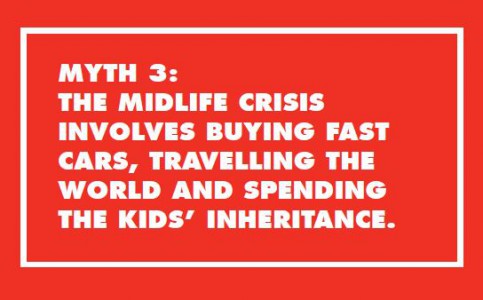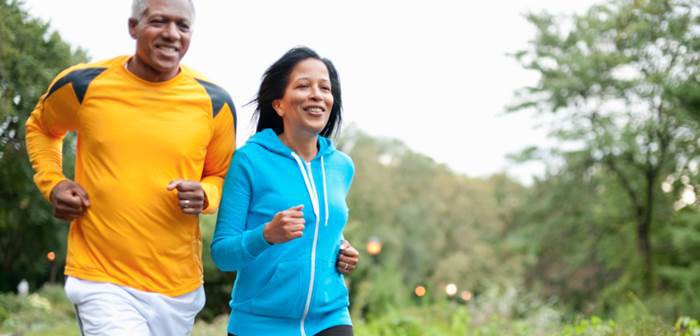As we continue to break down the generational myths that exist in our society, we take a look at the midlife crisis and the stereotypes that are associated with it.

What’s it all about?
Our research shows that our mid-40s to mid-50s are the unhappiest times in our lives. It’s the time when we’re most likely to be made redundant, get divorced and have our children leave home for University. It’s no wonder that this is the age commonly associated with a midlife crisis! Although there is no exact age, the NHS tells us that a midlife crisis generally happens between the ages of 35 and 50. Our research revealed that at the age of 44-47, it is the first time when people are more likely to be perceived as old instead of young, which may also be a contributing factor to behavioural and lifestyle changes in this time.

Everyone deals with this by splashing out on luxury goods, right? Buy a nice car, travel the world, enjoy the finer things, treat yourself to those things that you’ve always wanted but perhaps considered a bit too careless or frivolous financially. This stereotype is often seen as the response to a midlife crisis, in an attempt to recapture your youth.
“A midlife crisis happens when you realise life is passing you by and you start to panic about what you are doing in your life. I wanted to experience more things. I think the forties are the age where this happens most. I started going out more, I did a few rash things like buying a brand new car and I booked an expensive holiday.” – Stephen, 47
A new trend is emerging where people are trying to maintain their youth, not recapture it
People are starting to be more health-orientated as they reach this pivotal time in their lives, a shift away from the material stereotypes and towards lifestyle reassessment. A key feature of this is levels of physical activity and exercise, as people claim to be more active during this time in their lives.
For example, 56% of 40-43 years old say they are an active person (vs. 45% of 16-19-year-olds).
40-43-year-olds also scored highest for claiming that looking young is important to them, which may be a key influencer in this emerging trend, as people look beyond material possessions and focus on their own wellbeing.
Technology is playing a part
Wearable technology is playing a big role in this emerging trend, with more 40-43-year-olds agreeing that wearables encourage them to be more active than the proportion of 16-19-year-olds (23% vs 22%) . We previously suggested that wearable technology will lead to longer-term lifestyle changes in a former blog post) and people in their 40s appear to be testament to this.
What are the implications for this?
So, where do brands fit into all of this? This goes far beyond wearable technology. There are opportunities for brands to tap into these difficult times and offer support when people are going through that realisation of life achievements and want to stay healthy for longer. Be in it for the long haul.




